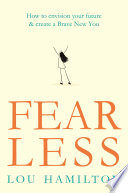

Fear is a natural human emotion that can either motivate or paralyze us. In 'Fear Less', the author explores how fear manifests in various aspects of life and how it can be a barrier to personal and professional growth. The book emphasizes the importance of acknowledging fear rather than suppressing it. By understanding the root causes of fear, readers can begin to dismantle its power over their decision-making processes. The author provides insights into the psychological underpinnings of fear, including evolutionary biology, which suggests that fear was once essential for survival. This understanding empowers readers to view fear as a signal rather than a stop sign, allowing them to navigate challenges more effectively.
Continue readingOne of the most profound insights in 'Fear Less' is the idea of reframing failure. The author argues that failure is not the end of the road but rather a stepping stone to success. By changing our perception of failure from something to be feared to an opportunity for growth, we can take more significant risks in our personal and professional lives. The book provides various case studies and examples of successful individuals who have encountered failures but used those experiences to propel themselves forward. This reframing helps to cultivate resilience and encourages a mindset that embraces challenges, ultimately leading to greater achievements.
Continue readingIn 'Fear Less', the author emphasizes the importance of vulnerability in overcoming fear. By being open about our fears and insecurities, we create deeper connections with others and foster an environment where collaboration and support thrive. The book discusses how vulnerability can lead to innovation, as it encourages people to share ideas and take creative risks without the fear of judgment. The author shares personal anecdotes and research findings that illustrate how embracing vulnerability can lead to profound personal transformations and stronger relationships, both in the workplace and in personal life.
Continue readingThe book introduces mindfulness as a powerful tool for managing fear. Mindfulness practices, such as meditation and deep breathing, can help individuals become more aware of their thoughts and feelings, allowing them to respond to fear with clarity rather than react impulsively. The author provides practical exercises and techniques for incorporating mindfulness into daily routines, emphasizing that regular practice can lead to a significant reduction in anxiety and fear. By cultivating a mindful approach, readers can learn to observe their fears without being overwhelmed by them, leading to better decision-making and improved emotional well-being.
Continue readingA central theme in 'Fear Less' is the idea that action is the antidote to fear. The author encourages readers to take small, actionable steps toward their goals, even when fear looms large. By breaking down larger objectives into manageable tasks, individuals can build momentum and gradually desensitize themselves to their fears. The book includes practical strategies for setting goals and tracking progress, reinforcing the notion that consistent action, no matter how small, can lead to significant change over time. This proactive approach empowers readers to confront their fears head-on and fosters a sense of agency in their lives.
Continue readingThe author underscores the importance of surrounding oneself with a supportive community in the journey to overcome fear. 'Fear Less' highlights how collaboration and shared experiences can diminish feelings of isolation and fear. The book offers guidance on how to cultivate a network of like-minded individuals who can provide encouragement and accountability. By sharing fears and challenges with others, readers can gain new perspectives and insights that help them navigate their struggles. The author emphasizes that building a supportive community is not only beneficial for personal growth but also for fostering innovation and creativity in professional settings.
Continue readingFinally, 'Fear Less' addresses the inevitability of change and uncertainty in life. The author argues that learning to embrace change rather than resist it is crucial for overcoming fear. By developing a mindset that views change as an opportunity for growth and learning, individuals can become more adaptable and resilient. The book provides strategies for coping with uncertainty, such as focusing on what can be controlled and letting go of the need for perfection. By accepting that change is a constant, readers can navigate life's transitions with greater ease and confidence, ultimately leading to a more fulfilling life.
Continue reading